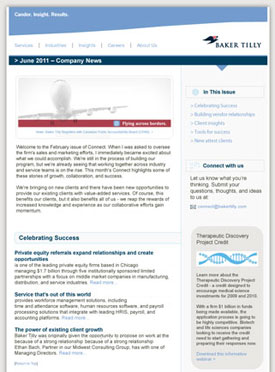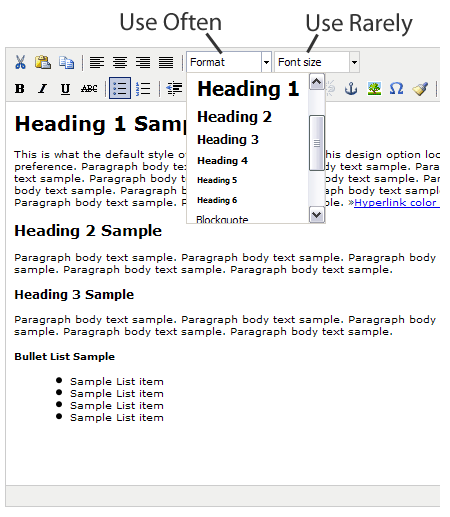Using Conformity to Communicate The Uniquness of Your Company
August 8th, 2011
A great example of the the principles of consistency and conformity is the email template we designed for Baker Tilly. Compare the email design with the graphic identity of their existing Website.
Seth Godin’s blog posts are always profound, but his most recent post Bypassing the Leap is especially relevant to the services we provide. The gist of his post is that most of the time creativity is the act of reinterpreting and reassembling elements that are already well accepted and proven to work.
Effective branding and design services are based from this same perspective. While it may sound contradictory, quality creative products are almost always intentionally designed to conform within well established boundaries.
No matter how unique of graphic identity a corporation has, you’ll find the logo almost always in the upper left and the main site navigation in one of two locations. This is staying within the proven boundaries of usability. When Fortune 500 corporations spend hundreds of thousands of dollars to develop their branding and identity all marketing publications will almost always have identical colors, layout and typeface. This is adhering to the core principle of graphic design—consistency. Corporations conform to the principles of usability and consistency because they know they’re the most effective way to communicate a credible message and the most effective way to persuade their customers to action.
Embracing conformity to communicate uniqueness is really the secret of success when it comes to marketing communication and application design.
Many small and mid-sized companies don’t get this. Have you ever found a Website through Google that you thought might be a good solution for a need only to have second thoughts when their Website design looked dated, amateur or unclear? No matter how unique and appealing their solution may be, if their graphic design and usability do not establish unwavering credibility you’re likely to just head back to Google to search for an alternative.
Small and mid-sized companies have a great opportunity to level the playing field against even massive competitors by communicating their unique value message by conforming to already accepted and proven principles.
Does your marketing communication produce credibility or doubt? Ask ten people outside your organization that you can trust to give you honest opinions about their impressions of your Website, emails or other marketing material. If you need an objective professional opinion let us know. The one thing you’ll get is honesty and there’s no obligation. If you do decide for yourself that your identity needs a makeover we provide consulting as well as in-house development and design services. You can call us at 866.770.7967 or through our online form.

